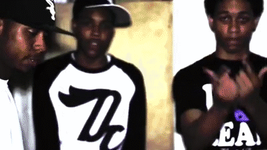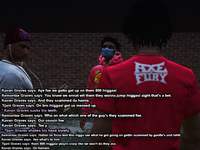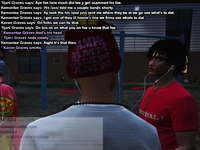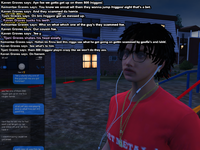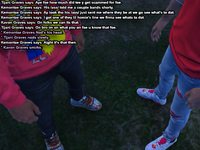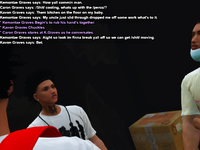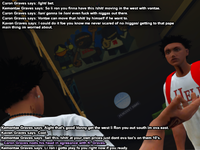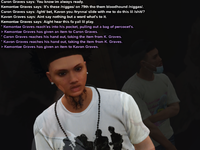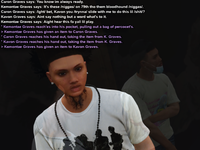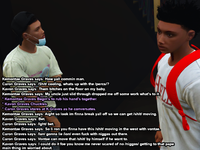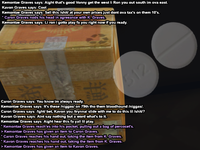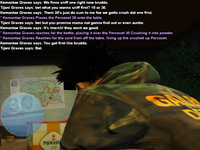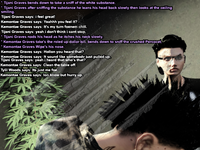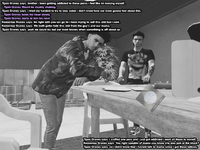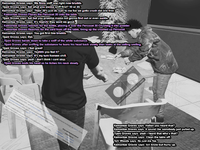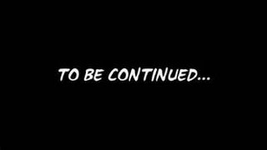Since ancient times, the storied NLMB, otherwise known as No Limit Muskegon Boys, has commanded a formidable presence in Chicago's urban landscape. Born from the union of No Limit, a faction of black P Stones, and Muskegon Boys, a contingent of GDs, NLMB emerged as a formidable force in 2005. Nestled within the enclave of 78th/79th and Essex, aptly nicknamed Terror Town on the city's east side, NLMB has solidified its stronghold over the years. The fusion of these two factions was catalyzed by escalating tensions with rival groups like Black Mobb and Lakeside, prompting a strategic alliance for survival.
Originally a modest group of GDs staking their claim on 78th and Muskegon Avenue, Muskegon Boys, led by figures like Doeski and White Bread, quickly asserted their dominance, laying claim to the Lowe buildings. As NLMB burgeoned, its younger members, known as "shorties," gravitated towards the heart of Terror Town, extending their influence beyond 79th Escanaba. With shifts in territory dynamics, such as Black Mobb's relinquishment of certain areas, figures like Twino and his cohorts expanded their presence along the 75th corridor, alongside groups like NLMM (Money Mafia).
The genesis of Shorty Mob occurred following the rise of Drenchgang, underscoring NLMB's expansive reach. While unified under the NLMB banner, various cliques within the organization, including No Limit and Muskegon Boyz, carved out their domains. Shorty Mob, emboldened by their desire for autonomy, seized control of Black Mobb's turf, positioning themselves amidst neighboring factions like ABK and M60. Though aligned with NLMB's ethos, Shorty Mob operates with a distinct agenda, notably amplifying their presence in conflicts like the EBE8200 beef, reflecting their burgeoning influence and aspirations.
Gentrification, a specter haunting urban neighborhoods, has cast its shadow over East Chicago, reshaping its social fabric. Disparities in wealth and power have spurred the influx of affluent residents, displacing longstanding communities. Real estate appraisers, deeming the area's predominantly African American population as undesirable, have catalyzed waves of evictions and exorbitant rent hikes, threatening the fabric of East Chicago's identity. Despite these challenges, the community has rallied, marshaling legal resources to combat unjust practices and resist encroaching forces.
East Chicago, steeped in history, stands as a testament to resilience amidst change. Once a bastion of middle-class and low-income African American families, the neighborhood now grapples with the encroachment of wealthier demographics. As Chicago ranks among the top cities where low-income households are supplanted by high-wage earners, East Chicago finds itself at the forefront of this transformation, navigating the complexities of urban development while safeguarding its heritage.
______________________________________________________________________________________________________________________________________________________________________________
New Age No Limit Muskegon Boys
In the past two decades, the intersection of 79th & Burnham has undergone a dramatic transformation, mirroring the evolving landscape of urban development. With the advent of new upscale shopping centers and dining establishments, the neighborhood has witnessed a shift in its demographic composition. As African American residents grapple with economic hardships and soaring living costs, many find themselves on the brink of displacement, struggling to afford even the most basic necessities in the midst of the labyrinthine streets.
ShortyMobb, a prominent clique nestled within Chicago's East Side, represents the youthful vanguard of the esteemed No Limit Muskegon Boys. While some members of ShortyMobb choose to distance themselves from NLMB, opting for an independent approach, the clique has burgeoned into a formidable force in its own right. Comprising teenagers ranging from twelve to nineteen years old, ShortyMobb's territorial influence extends from the 74th/Kingston corridor to 75th/Kingston. Engaged in a spectrum of illicit activities, ShortyMobb has found itself embroiled in protracted feuds with rival gangs like GetBusyGang and BuckzCity, resulting in a string of violent confrontations over the years. Tragically, the gang has mourned the loss of its youth, with the untimely deaths of 13-year-old Lil Robert, who was fatally shot while seated in a van on April 20, 2023, and another member known as Mello, who met a similar fate at the hands of rival gang members.
DTR/DottieRoad emerges as another influential clique on Chicago's East Side, embodying yet another iteration of NLMB's generational legacy. Often intertwined with ShortyMobb, DTR/DottieRoad members navigate the complex dynamics of gang affiliation, forging close ties within the NLMB network while carving out their distinct identity in the urban tapestry.
 Too Reckless Gang
Too Reckless Gang
To the Reckless Gang, also known as Recklessway, ShortyMobb welcomed a cadre of youthful members, ranging in age from 13 to 19. Among them was Roderick Barnes, affectionately known as Lil Rod or Reckless Rod by his peers. In the sprawling urban battleground of Eastside Chicago, where rival gangs vied for supremacy, it was the No Limit Muskegon Boys who commanded dominion over the territory. Barnes found his way into ShortyMobb at a tender age, drawn by the allure of camaraderie and street culture that permeated the group's ranks.
On the fateful evening of July 3rd, 2022, at approximately 10:54 PM, tragedy struck as Roderick Barnes fell victim to gun violence just outside his home. His untimely demise sent shockwaves reverberating throughout the entire Eastside Chicago community, casting a somber pall over the neighborhood streets. Barnes, yet another casualty of senseless violence, became a sobering statistic, his promising future snuffed out in an instant. Both ShortyMobb and No Limit mourned the loss of Reckless Rod, grappling with the profound grief of losing one of their own.
In the aftermath of Barnes' passing, his grieving family gathered to honor his memory, releasing a cascade of balloons into the night sky. Amidst tears and solemn remembrance, his mother wept for the son she had lovingly raised, mourning the potential that had been cruelly cut short. Meanwhile, Barnes' comrades from ShortyMobb paid tribute to their fallen brother in their own way, standing united in grief as they bid farewell to a cherished friend. Yet, amidst the poignant tribute, the mournful silence was shattered by the sound of gunfire, as an ominous black 2007 Charger ominously prowled the streets, unleashing a barrage of shots into the gathering crowd, leaving witnesses to grapple with the chilling aftermath of yet another act of violence in the heart of the city.
Police confirmed that over 40 rounds was found during the investigation of the shooting, while rushing over there many of the male's at the location got arrested, 4 weapons was recovered on scene. A few months after the incident you'll see a few Shortymobb members claiming Recklessway or saying Double R gang it's suppose to symbolize Reckless Rod. That's were Too Reckless Gang came from
___________________________________________________________________________________________
Tradgedy & Turmoil
A drive-by shooting abruptly ended a memorial gathering for Lil Robert, which was supposed to be a high-profile balloon release ceremony. According to witnesses, the hair-raising moment was that an ominous black vehicle opened fire on the crowd. There was chaos, and multiple people got injured. Over 40 rounds were discharged in the incident, after which the police responded immediately. There were arrests of several people in the incident, and four firearms were recovered. This violent interruption during a moment of mourning further exposes the pervasive problem of gun violence on East Side Chicago. The community's reaction to the shooting was immediate and profound. Local residents, who were still trying to grasp the loss of Lil Robert, found themselves swimming in a new wave of fear and outrage. Vigils and community meetings were quickly organized, trying to deal with the violence and call out the city officials to act against it. Neighborhood leaders and activists are calling for more police presence and community-based initiatives to address the root causes of the violence. Parents and guardians expressed increased concern about their children's safety, where many fear no place in their neighborhood would be safe anymore. Schools in the vicinity held emergency assemblies discussing safety measures and offered counseling to students traumatized by the incident. Law enforcement agencies have intensified their efforts to curb gang violence in the area. The Chicago Police Department has increased its patrols and surveillance, particularly around known hotspots like 79th & Burnham. Detectives worked around the clock to gather intelligence on the perpetrators, leading to several key arrests in the following weeks. The use of technologies such as ShotSpotter, a technology that detects and locates gunfire, played a crucial role in the rapid police response to the balloon release shooting. This incident also brought discussions within the CPD and city officials as to how expanding such technologies could better combat gun violence within the city as a whole. In the days following the shooting, this incident sent a lot of shockwaves through ShortyMobb. The added presence of the police and surveillance put them under pressure, disrupting their operations and leading to a good number of arrests. Among those arrested were some people linked to violent incidences that had recently taken place, including the drive-by shooting at the memorial. The leadership also faced scrutiny from within as younger members questioned the decisions that had led to such high-profile violence and the subsequent crackdown. Tensions mounted as the gang struggled to maintain its grip on its territory amidst the stepped-up law enforcement attention. As the community continued to mourn Lil Robert, efforts towards healing and rebuilding gained momentum. Local organizations and churches spearheaded initiatives that aimed at support and resource provision to affected families. There was a bringing in of mental health professionals to offer counseling and therapy to those traumatized by the violence, especially children who had witnessed the shootings. The youth programs and outreach were also increased with a focus on providing safe spaces and constructive activities for the young people within the neighborhood. These initiatives had the aim of diverting at-risk youth from gang involvement to positive, community-oriented paths. The tragic events surrounding the balloon release for Lil Robert galvanized the community and city officials to push for lasting change. Activists and residents called for comprehensive approaches to address the root causes of gang violence, including poverty, lack of educational opportunities, and systemic inequities. City leaders answered by promising to increase funding for community development programs and law enforcement initiatives that aimed to reduce gun violence. Announcements of a plan to enhance neighborhood infrastructures, educational resources, and job opportunities for the residents of East Side Chicago emerged. While the drive-by shooting at Lil Robert's memorial served as a very stark reminder of the difficulties facing East Side Chicago, it also took people to new levels in this community by rekindling the sense of solidarity and determination. Residents, activists, and officials alike vowed to keep working toward building a safer and supportive environment for future generations. The way forward would still have many challenges, but the collective will to overcome such obstacles shone through in the face of adversity.

_____________________________________________________________________________
Present Day ShortyMobb
In the heart of the South Side of Chicago, a new generation of gang members is making its mark. ShortyMobb, a clique of the more famous No Limit Muskegon Boys organization, is a group of guys aged from 12 to 23 years old. The members have established a strong presence within their territory, which runs from 74th & Kingston to 75th & Kingston/Colfax. Despite their youth, they engage in a range of crimes from first-degree murder to armed robbery, attempted murder, and possession of illegal weapons. Although ShortyMobb works under the NLMB umbrella, they maintain a degree of autonomy. The young affiliates are guided, at times, by the older members but usually by themselves. These young affiliates are vocal in their disputes, particularly with EBE 8200, with whom they are in a constant war. They handle tension on the Lowend and other areas on their own. They are very active on the Internet, where they often disrespect rivals and show the world what they are doing. The gang uses the Internet as a way of displaying their lifestyle and intimidating the opposition, with videos and pictures that show their artillery and exploits on the street. On 74th & Kingston, this gang is in full power. This territory was gained after BlackMobb left the area, creating a vacuum that NLMB, through Twino and his brother, took advantage of, thus enabling ShortyMobb to establish their stronghold on East Side Chicago. Neighboring factions such as ABK and M60 complicate the territorial dynamics. This gang is deeply interested in making money, making sure that their people are well equipped. They do this through various illegal activities, which include drug trafficking and armed robbery. The money they collect is at times re-invested in the purchase of guns and other forms of weaponry to protect their territory and assert their dominance over others. The activities of ShortyMobb have had a profound impact on the local community. The general atmosphere is that of fear and instability, with frequent violence and crimes. Residents live daily under constant threat of gang-related violence. Despite continued efforts by law enforcement to curb their influence, ShortyMobb remains a powerful and significant presence. Wood Lawn is one of the 77 Chicago neighborhoods and is located on the South Side of the city. It is a mostly African American community bordering Lake Michigan on the east, 60th Street on the north, Martin Luther King Drive on the west, and 67th Street on the south. As of the 2024 census, Wood Lawn has a population of approximately 23,000 residents. As much as it faces a variety of socio-economic challenges, the area stands out when it comes to high crime rates that contribute to the sense of instability. For every 100 residents, Wood Lawn experiences 1,188 assault charges, 41 murders, 786 robberies, and 2,360 theft cases annually. These statistics speak for themselves in showing violence and criminal activity in the neighborhood where gangs like the Black P Stones have historically held influence. The future of ShortyMobb is unclear, and their impact on East Side Chicago remains to be seen. While they continue to exert a strong influence, their activities draw significant law enforcement attention. The resilience of the community and the efforts to fight gang violence will be essential in determining the trajectory of the neighborhood. As ShortyMobb members grow older and seek new paths, the gang's dynamics and influence may evolve to present challenges but also bring opportunities for change within the community.

Originally a modest group of GDs staking their claim on 78th and Muskegon Avenue, Muskegon Boys, led by figures like Doeski and White Bread, quickly asserted their dominance, laying claim to the Lowe buildings. As NLMB burgeoned, its younger members, known as "shorties," gravitated towards the heart of Terror Town, extending their influence beyond 79th Escanaba. With shifts in territory dynamics, such as Black Mobb's relinquishment of certain areas, figures like Twino and his cohorts expanded their presence along the 75th corridor, alongside groups like NLMM (Money Mafia).
The genesis of Shorty Mob occurred following the rise of Drenchgang, underscoring NLMB's expansive reach. While unified under the NLMB banner, various cliques within the organization, including No Limit and Muskegon Boyz, carved out their domains. Shorty Mob, emboldened by their desire for autonomy, seized control of Black Mobb's turf, positioning themselves amidst neighboring factions like ABK and M60. Though aligned with NLMB's ethos, Shorty Mob operates with a distinct agenda, notably amplifying their presence in conflicts like the EBE8200 beef, reflecting their burgeoning influence and aspirations.
Gentrification, a specter haunting urban neighborhoods, has cast its shadow over East Chicago, reshaping its social fabric. Disparities in wealth and power have spurred the influx of affluent residents, displacing longstanding communities. Real estate appraisers, deeming the area's predominantly African American population as undesirable, have catalyzed waves of evictions and exorbitant rent hikes, threatening the fabric of East Chicago's identity. Despite these challenges, the community has rallied, marshaling legal resources to combat unjust practices and resist encroaching forces.
East Chicago, steeped in history, stands as a testament to resilience amidst change. Once a bastion of middle-class and low-income African American families, the neighborhood now grapples with the encroachment of wealthier demographics. As Chicago ranks among the top cities where low-income households are supplanted by high-wage earners, East Chicago finds itself at the forefront of this transformation, navigating the complexities of urban development while safeguarding its heritage.
______________________________________________________________________________________________________________________________________________________________________________
New Age No Limit Muskegon Boys
In the past two decades, the intersection of 79th & Burnham has undergone a dramatic transformation, mirroring the evolving landscape of urban development. With the advent of new upscale shopping centers and dining establishments, the neighborhood has witnessed a shift in its demographic composition. As African American residents grapple with economic hardships and soaring living costs, many find themselves on the brink of displacement, struggling to afford even the most basic necessities in the midst of the labyrinthine streets.
ShortyMobb, a prominent clique nestled within Chicago's East Side, represents the youthful vanguard of the esteemed No Limit Muskegon Boys. While some members of ShortyMobb choose to distance themselves from NLMB, opting for an independent approach, the clique has burgeoned into a formidable force in its own right. Comprising teenagers ranging from twelve to nineteen years old, ShortyMobb's territorial influence extends from the 74th/Kingston corridor to 75th/Kingston. Engaged in a spectrum of illicit activities, ShortyMobb has found itself embroiled in protracted feuds with rival gangs like GetBusyGang and BuckzCity, resulting in a string of violent confrontations over the years. Tragically, the gang has mourned the loss of its youth, with the untimely deaths of 13-year-old Lil Robert, who was fatally shot while seated in a van on April 20, 2023, and another member known as Mello, who met a similar fate at the hands of rival gang members.
DTR/DottieRoad emerges as another influential clique on Chicago's East Side, embodying yet another iteration of NLMB's generational legacy. Often intertwined with ShortyMobb, DTR/DottieRoad members navigate the complex dynamics of gang affiliation, forging close ties within the NLMB network while carving out their distinct identity in the urban tapestry.

To the Reckless Gang, also known as Recklessway, ShortyMobb welcomed a cadre of youthful members, ranging in age from 13 to 19. Among them was Roderick Barnes, affectionately known as Lil Rod or Reckless Rod by his peers. In the sprawling urban battleground of Eastside Chicago, where rival gangs vied for supremacy, it was the No Limit Muskegon Boys who commanded dominion over the territory. Barnes found his way into ShortyMobb at a tender age, drawn by the allure of camaraderie and street culture that permeated the group's ranks.
On the fateful evening of July 3rd, 2022, at approximately 10:54 PM, tragedy struck as Roderick Barnes fell victim to gun violence just outside his home. His untimely demise sent shockwaves reverberating throughout the entire Eastside Chicago community, casting a somber pall over the neighborhood streets. Barnes, yet another casualty of senseless violence, became a sobering statistic, his promising future snuffed out in an instant. Both ShortyMobb and No Limit mourned the loss of Reckless Rod, grappling with the profound grief of losing one of their own.
In the aftermath of Barnes' passing, his grieving family gathered to honor his memory, releasing a cascade of balloons into the night sky. Amidst tears and solemn remembrance, his mother wept for the son she had lovingly raised, mourning the potential that had been cruelly cut short. Meanwhile, Barnes' comrades from ShortyMobb paid tribute to their fallen brother in their own way, standing united in grief as they bid farewell to a cherished friend. Yet, amidst the poignant tribute, the mournful silence was shattered by the sound of gunfire, as an ominous black 2007 Charger ominously prowled the streets, unleashing a barrage of shots into the gathering crowd, leaving witnesses to grapple with the chilling aftermath of yet another act of violence in the heart of the city.
Police confirmed that over 40 rounds was found during the investigation of the shooting, while rushing over there many of the male's at the location got arrested, 4 weapons was recovered on scene. A few months after the incident you'll see a few Shortymobb members claiming Recklessway or saying Double R gang it's suppose to symbolize Reckless Rod. That's were Too Reckless Gang came from
___________________________________________________________________________________________
Tradgedy & Turmoil
A drive-by shooting abruptly ended a memorial gathering for Lil Robert, which was supposed to be a high-profile balloon release ceremony. According to witnesses, the hair-raising moment was that an ominous black vehicle opened fire on the crowd. There was chaos, and multiple people got injured. Over 40 rounds were discharged in the incident, after which the police responded immediately. There were arrests of several people in the incident, and four firearms were recovered. This violent interruption during a moment of mourning further exposes the pervasive problem of gun violence on East Side Chicago. The community's reaction to the shooting was immediate and profound. Local residents, who were still trying to grasp the loss of Lil Robert, found themselves swimming in a new wave of fear and outrage. Vigils and community meetings were quickly organized, trying to deal with the violence and call out the city officials to act against it. Neighborhood leaders and activists are calling for more police presence and community-based initiatives to address the root causes of the violence. Parents and guardians expressed increased concern about their children's safety, where many fear no place in their neighborhood would be safe anymore. Schools in the vicinity held emergency assemblies discussing safety measures and offered counseling to students traumatized by the incident. Law enforcement agencies have intensified their efforts to curb gang violence in the area. The Chicago Police Department has increased its patrols and surveillance, particularly around known hotspots like 79th & Burnham. Detectives worked around the clock to gather intelligence on the perpetrators, leading to several key arrests in the following weeks. The use of technologies such as ShotSpotter, a technology that detects and locates gunfire, played a crucial role in the rapid police response to the balloon release shooting. This incident also brought discussions within the CPD and city officials as to how expanding such technologies could better combat gun violence within the city as a whole. In the days following the shooting, this incident sent a lot of shockwaves through ShortyMobb. The added presence of the police and surveillance put them under pressure, disrupting their operations and leading to a good number of arrests. Among those arrested were some people linked to violent incidences that had recently taken place, including the drive-by shooting at the memorial. The leadership also faced scrutiny from within as younger members questioned the decisions that had led to such high-profile violence and the subsequent crackdown. Tensions mounted as the gang struggled to maintain its grip on its territory amidst the stepped-up law enforcement attention. As the community continued to mourn Lil Robert, efforts towards healing and rebuilding gained momentum. Local organizations and churches spearheaded initiatives that aimed at support and resource provision to affected families. There was a bringing in of mental health professionals to offer counseling and therapy to those traumatized by the violence, especially children who had witnessed the shootings. The youth programs and outreach were also increased with a focus on providing safe spaces and constructive activities for the young people within the neighborhood. These initiatives had the aim of diverting at-risk youth from gang involvement to positive, community-oriented paths. The tragic events surrounding the balloon release for Lil Robert galvanized the community and city officials to push for lasting change. Activists and residents called for comprehensive approaches to address the root causes of gang violence, including poverty, lack of educational opportunities, and systemic inequities. City leaders answered by promising to increase funding for community development programs and law enforcement initiatives that aimed to reduce gun violence. Announcements of a plan to enhance neighborhood infrastructures, educational resources, and job opportunities for the residents of East Side Chicago emerged. While the drive-by shooting at Lil Robert's memorial served as a very stark reminder of the difficulties facing East Side Chicago, it also took people to new levels in this community by rekindling the sense of solidarity and determination. Residents, activists, and officials alike vowed to keep working toward building a safer and supportive environment for future generations. The way forward would still have many challenges, but the collective will to overcome such obstacles shone through in the face of adversity.

_____________________________________________________________________________
Present Day ShortyMobb
In the heart of the South Side of Chicago, a new generation of gang members is making its mark. ShortyMobb, a clique of the more famous No Limit Muskegon Boys organization, is a group of guys aged from 12 to 23 years old. The members have established a strong presence within their territory, which runs from 74th & Kingston to 75th & Kingston/Colfax. Despite their youth, they engage in a range of crimes from first-degree murder to armed robbery, attempted murder, and possession of illegal weapons. Although ShortyMobb works under the NLMB umbrella, they maintain a degree of autonomy. The young affiliates are guided, at times, by the older members but usually by themselves. These young affiliates are vocal in their disputes, particularly with EBE 8200, with whom they are in a constant war. They handle tension on the Lowend and other areas on their own. They are very active on the Internet, where they often disrespect rivals and show the world what they are doing. The gang uses the Internet as a way of displaying their lifestyle and intimidating the opposition, with videos and pictures that show their artillery and exploits on the street. On 74th & Kingston, this gang is in full power. This territory was gained after BlackMobb left the area, creating a vacuum that NLMB, through Twino and his brother, took advantage of, thus enabling ShortyMobb to establish their stronghold on East Side Chicago. Neighboring factions such as ABK and M60 complicate the territorial dynamics. This gang is deeply interested in making money, making sure that their people are well equipped. They do this through various illegal activities, which include drug trafficking and armed robbery. The money they collect is at times re-invested in the purchase of guns and other forms of weaponry to protect their territory and assert their dominance over others. The activities of ShortyMobb have had a profound impact on the local community. The general atmosphere is that of fear and instability, with frequent violence and crimes. Residents live daily under constant threat of gang-related violence. Despite continued efforts by law enforcement to curb their influence, ShortyMobb remains a powerful and significant presence. Wood Lawn is one of the 77 Chicago neighborhoods and is located on the South Side of the city. It is a mostly African American community bordering Lake Michigan on the east, 60th Street on the north, Martin Luther King Drive on the west, and 67th Street on the south. As of the 2024 census, Wood Lawn has a population of approximately 23,000 residents. As much as it faces a variety of socio-economic challenges, the area stands out when it comes to high crime rates that contribute to the sense of instability. For every 100 residents, Wood Lawn experiences 1,188 assault charges, 41 murders, 786 robberies, and 2,360 theft cases annually. These statistics speak for themselves in showing violence and criminal activity in the neighborhood where gangs like the Black P Stones have historically held influence. The future of ShortyMobb is unclear, and their impact on East Side Chicago remains to be seen. While they continue to exert a strong influence, their activities draw significant law enforcement attention. The resilience of the community and the efforts to fight gang violence will be essential in determining the trajectory of the neighborhood. As ShortyMobb members grow older and seek new paths, the gang's dynamics and influence may evolve to present challenges but also bring opportunities for change within the community.

Last edited by a moderator:

